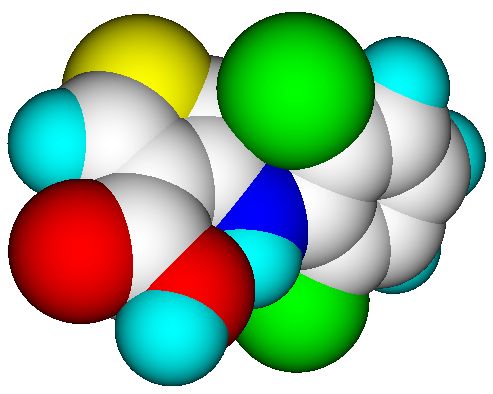ChemBrain IXL, an interactive molecules and reactions database "with brains"
 ChemBrain IXL comprises two chemical databases, a molecules database encompassing more than 44000 chemical compounds in their 3-dimensional shape including many experimental and calculated molecular descriptors and further data, as well as a reactions database containing more than 2600 chemical name, standard and special reactions with literature references.
ChemBrain IXL comprises two chemical databases, a molecules database encompassing more than 44000 chemical compounds in their 3-dimensional shape including many experimental and calculated molecular descriptors and further data, as well as a reactions database containing more than 2600 chemical name, standard and special reactions with literature references.
Yet it is much more than just another ordinary database, in that it not only collects the structure and data of molecules but is also capable of learning from these data (e. g. for QSAR studies) by means of inbuilt algorithms based on either atom-groups additivity models or on various architectures of artificial neural networks. Moreover, the molecules and reactions databases are able to interact: upon a single mouseclick ChemBrain provides a list of potential synthetic methods for a given molecule, sorted by their relevance, thus supporting retro-synthesis considerations.
A special feature of ChemBrain is the capability of calculating the electronic absorption spectrum and colour of a molecule upon a single mouse click, based on quantum-theoretical methods.
 In a space-filling graphics window, various shapes of a molecule can be viewed as well as a direct insight into the reactivity of the molecule and its most probable reaction site, i. e. the selectivity, towards electro- or nucleophilic reactants on the basis of the frontier-orbital theory.
In a space-filling graphics window, various shapes of a molecule can be viewed as well as a direct insight into the reactivity of the molecule and its most probable reaction site, i. e. the selectivity, towards electro- or nucleophilic reactants on the basis of the frontier-orbital theory.
It goes without saying that you can also include your own expertise by adding or updating your own molecules and reactions to the existing database sets in the most user-friendly way, thus enabling ChemBrain to directly learn from your own lab work. In fact, you may even use ChemBrain as your personal lab journal!
 Of course, ChemBrain also enables you to cooperate with external scientific programs in that it allows you to import or export molecules one by one or in condensed data sets in an internationally standardized way.
Of course, ChemBrain also enables you to cooperate with external scientific programs in that it allows you to import or export molecules one by one or in condensed data sets in an internationally standardized way.
Beyond this, you have the option to either work locally with your personal databases or join an intranet workgroup sharing a common set of the databases.
Please click on the examples on the sidebar, detailing how ChemBrain supports your scientific work!